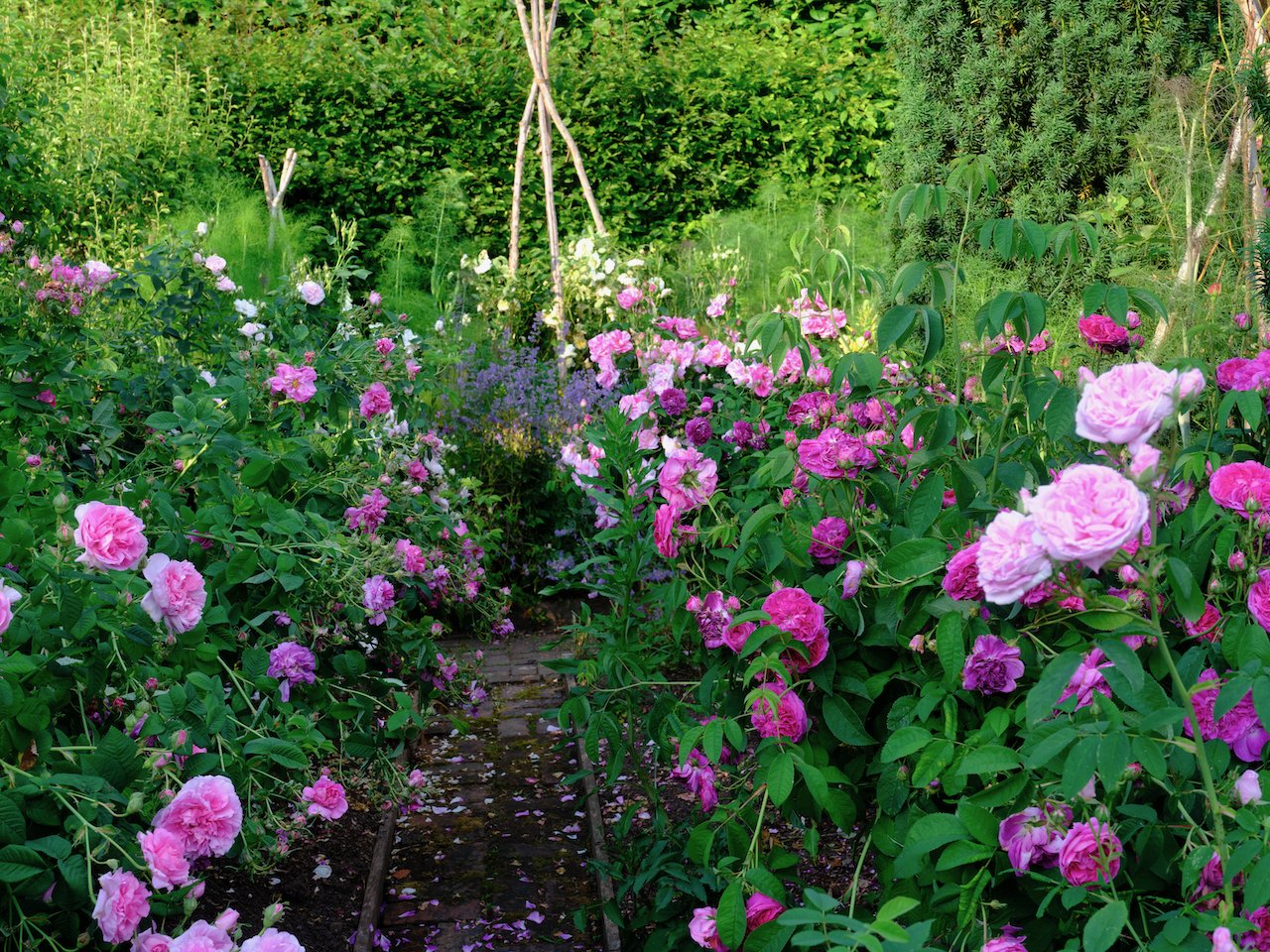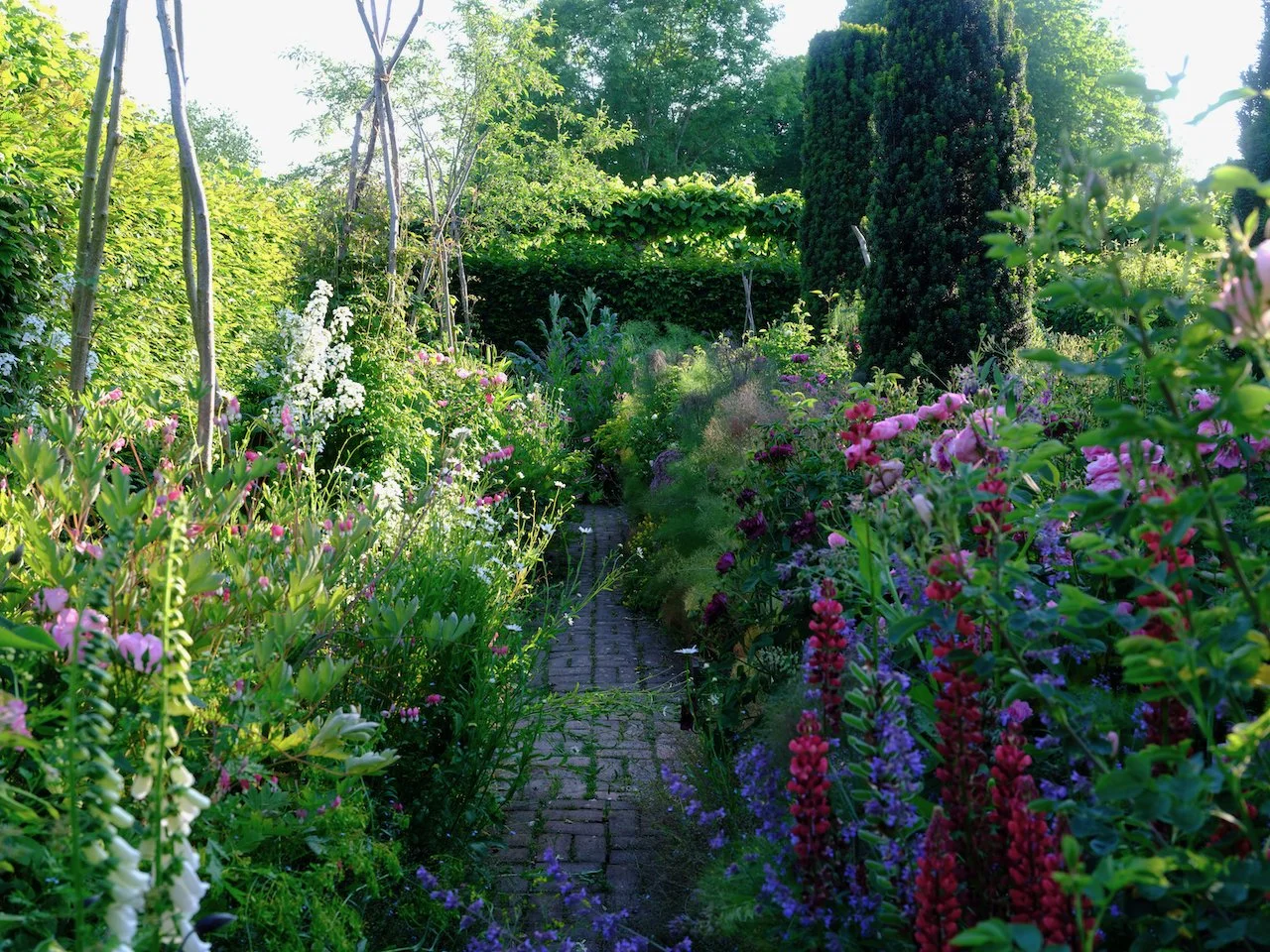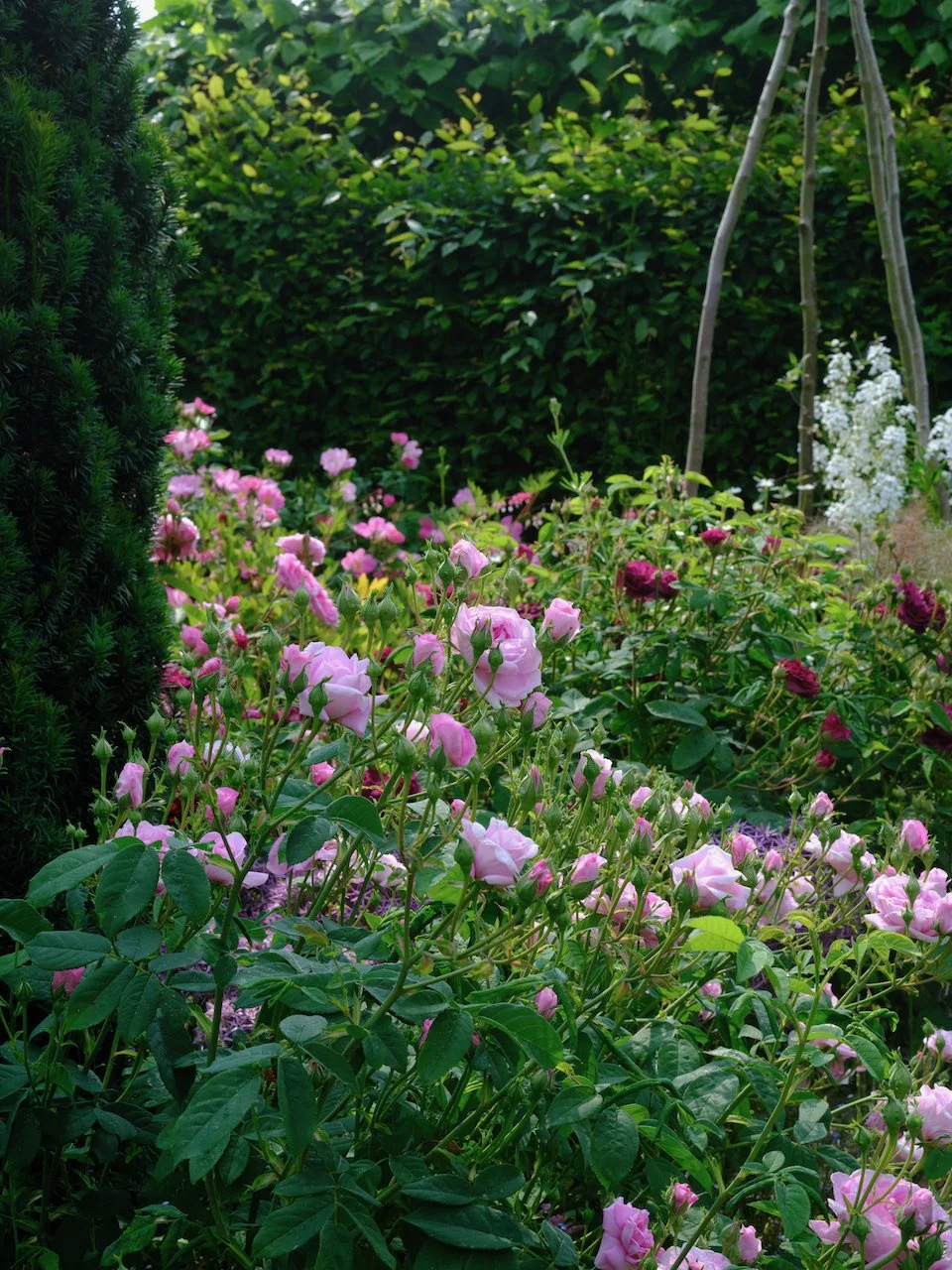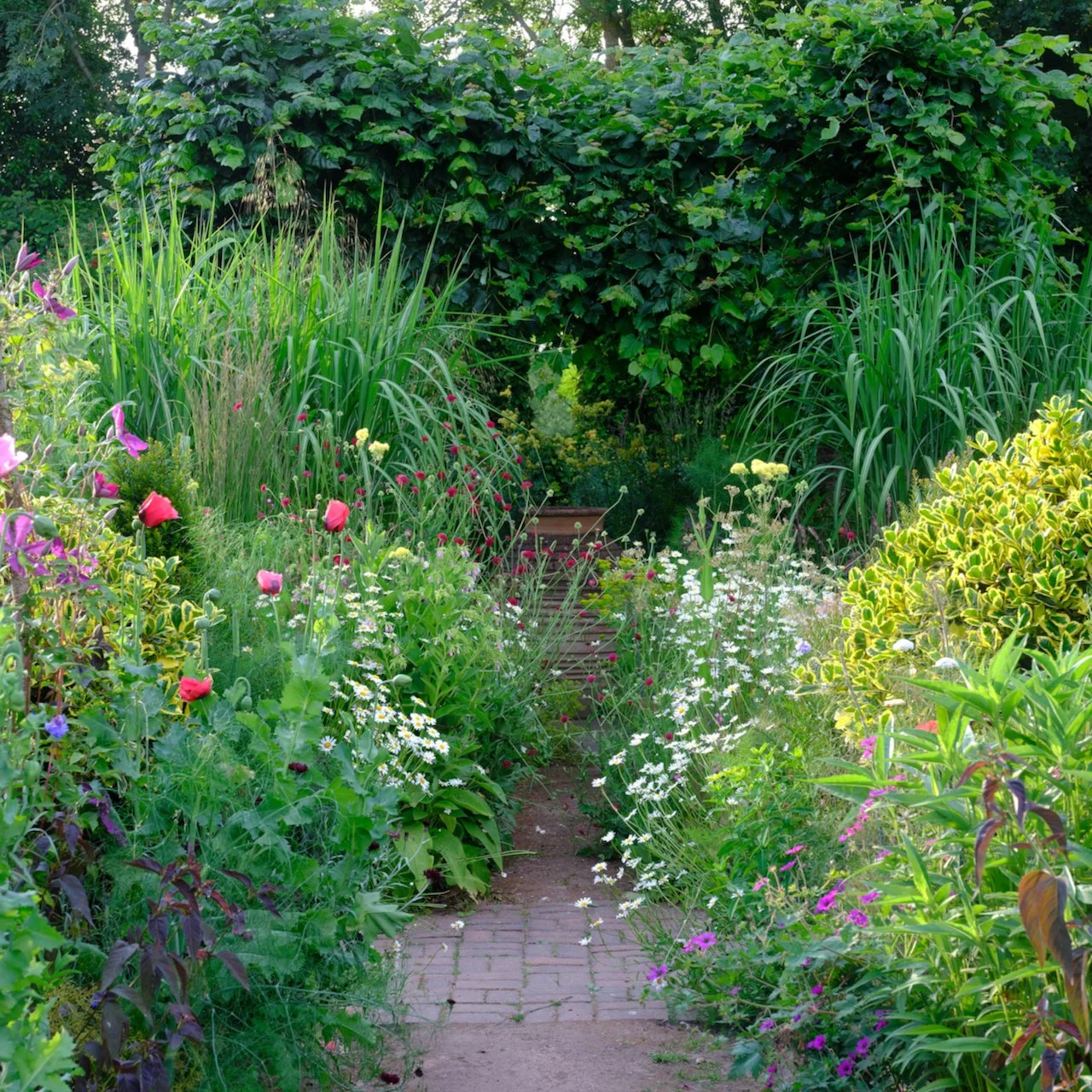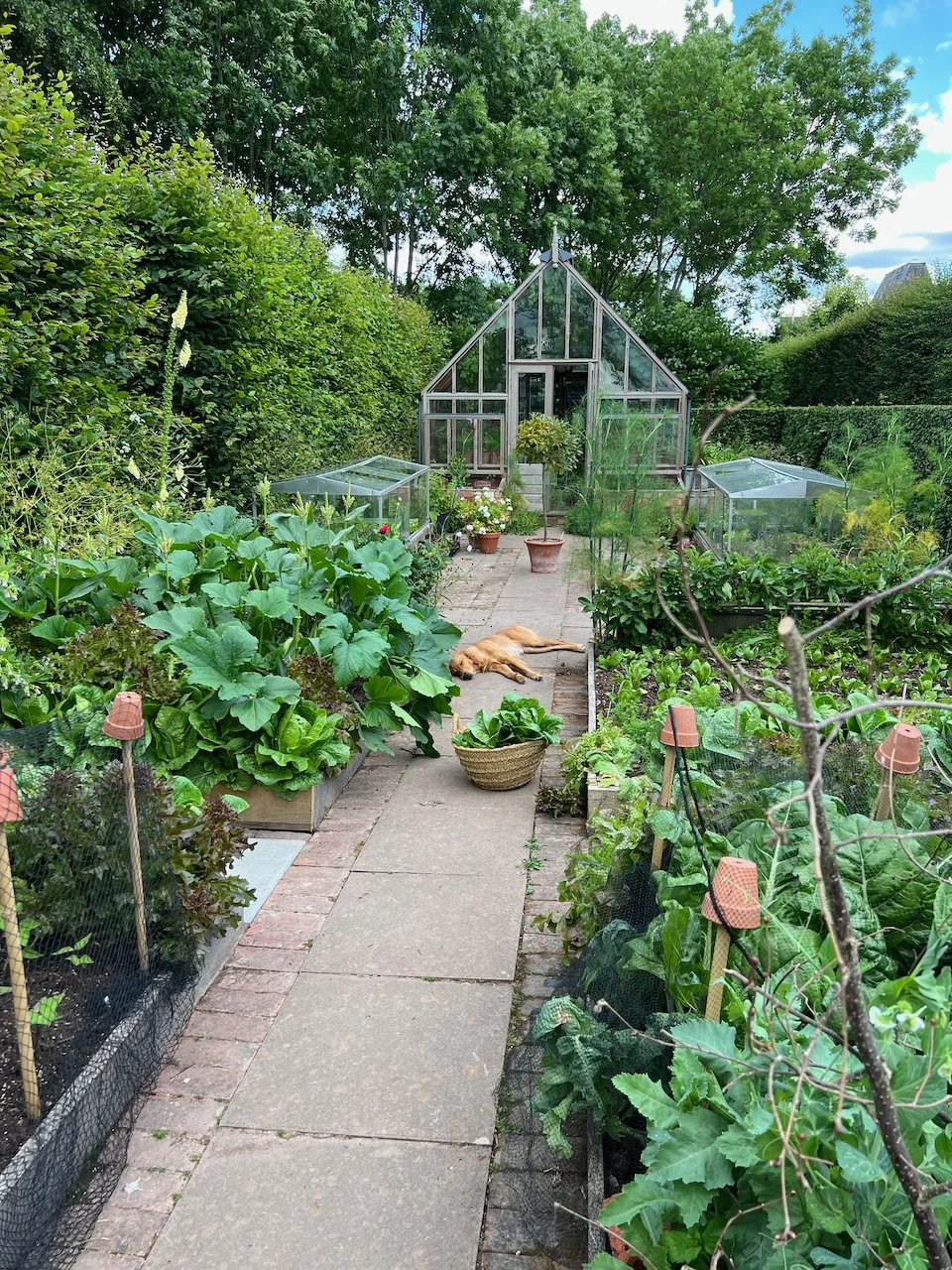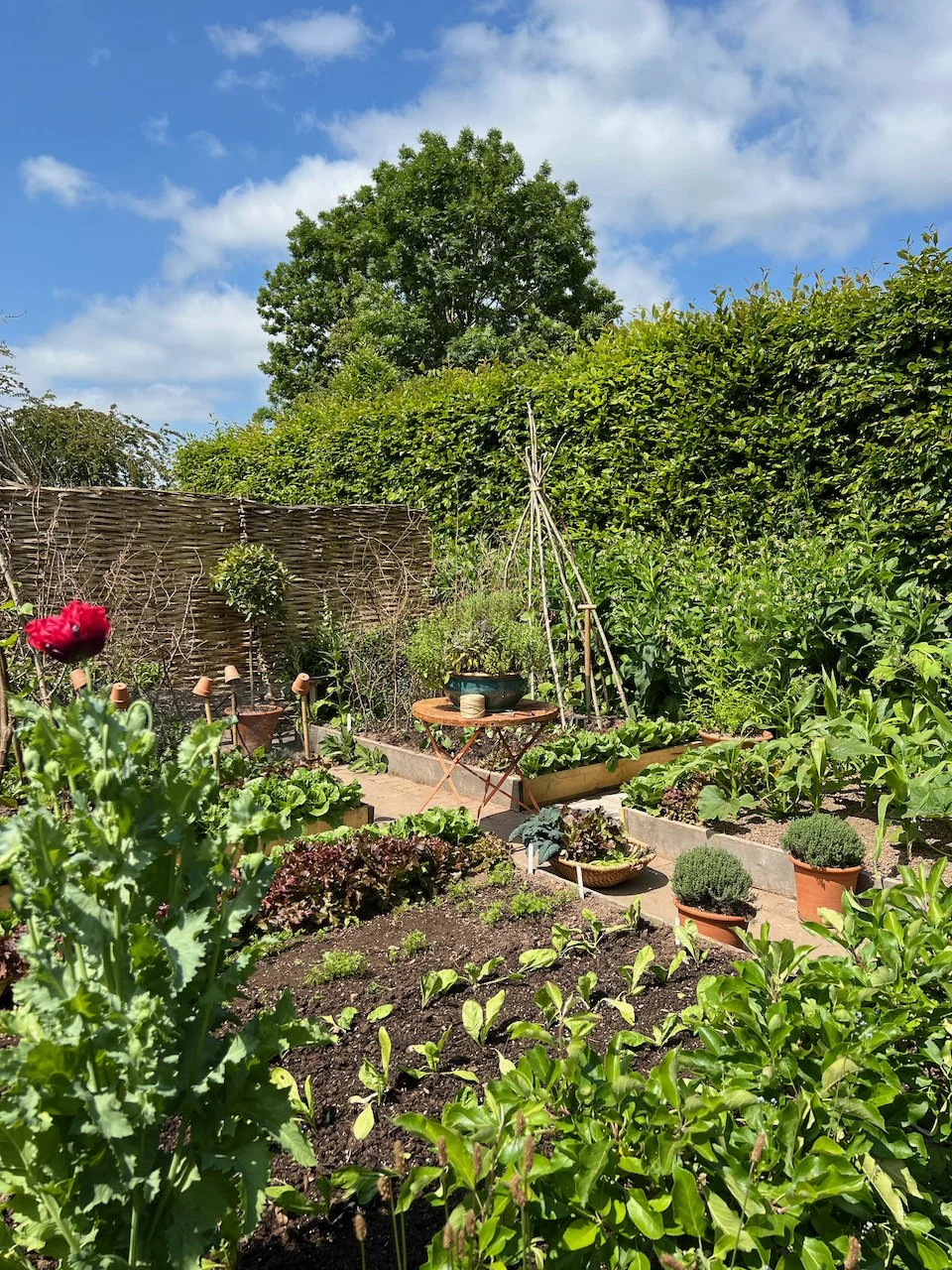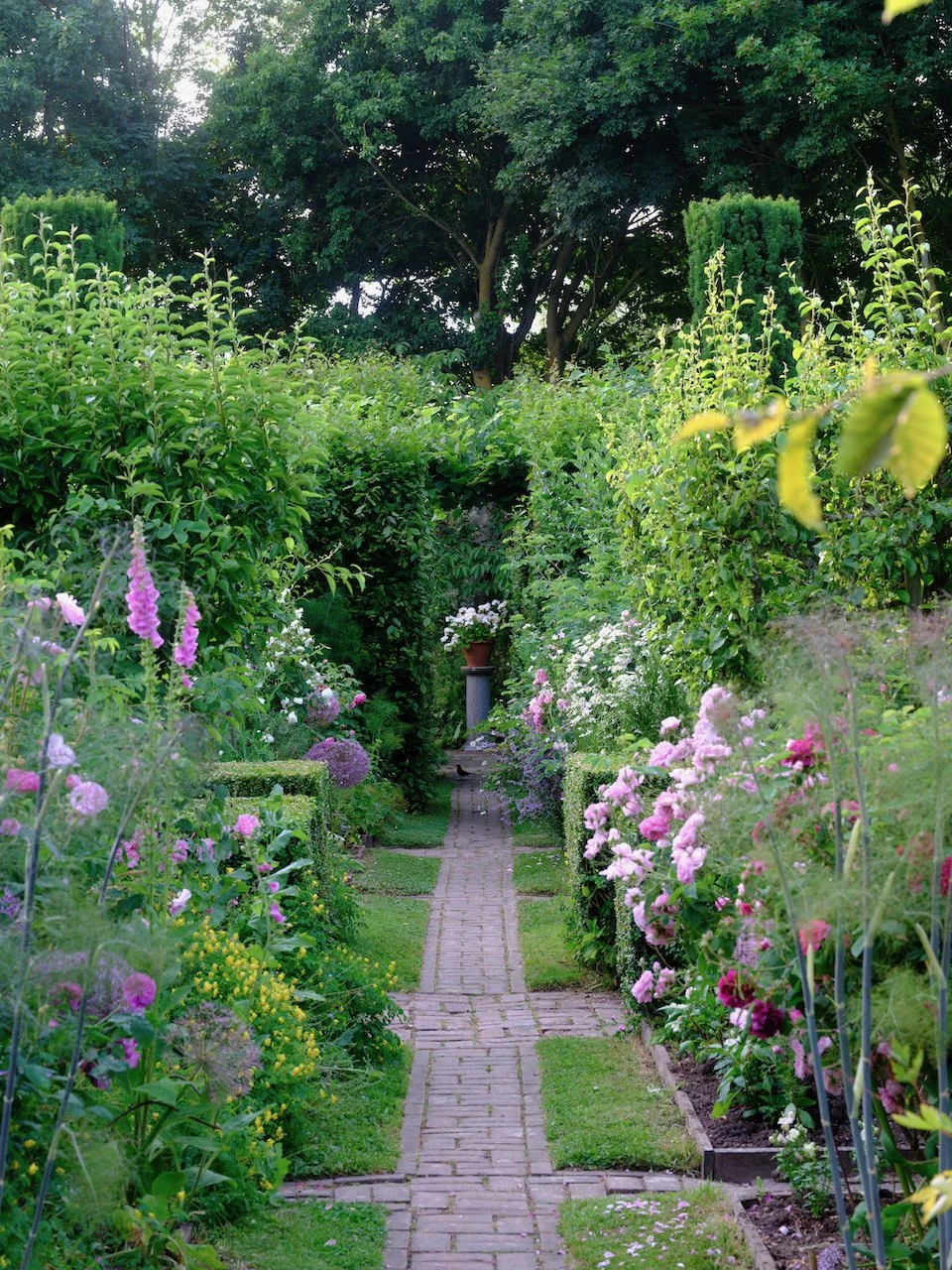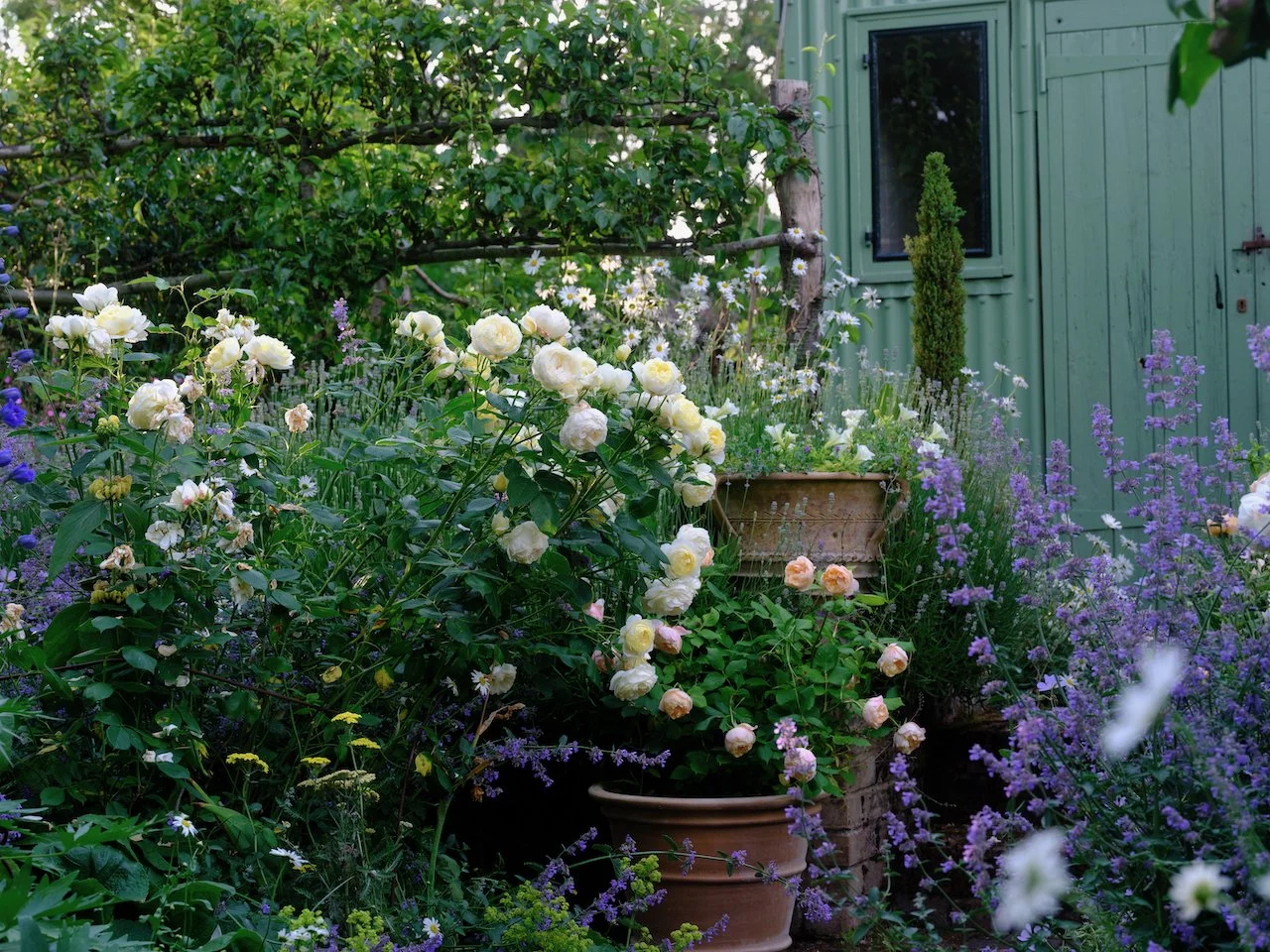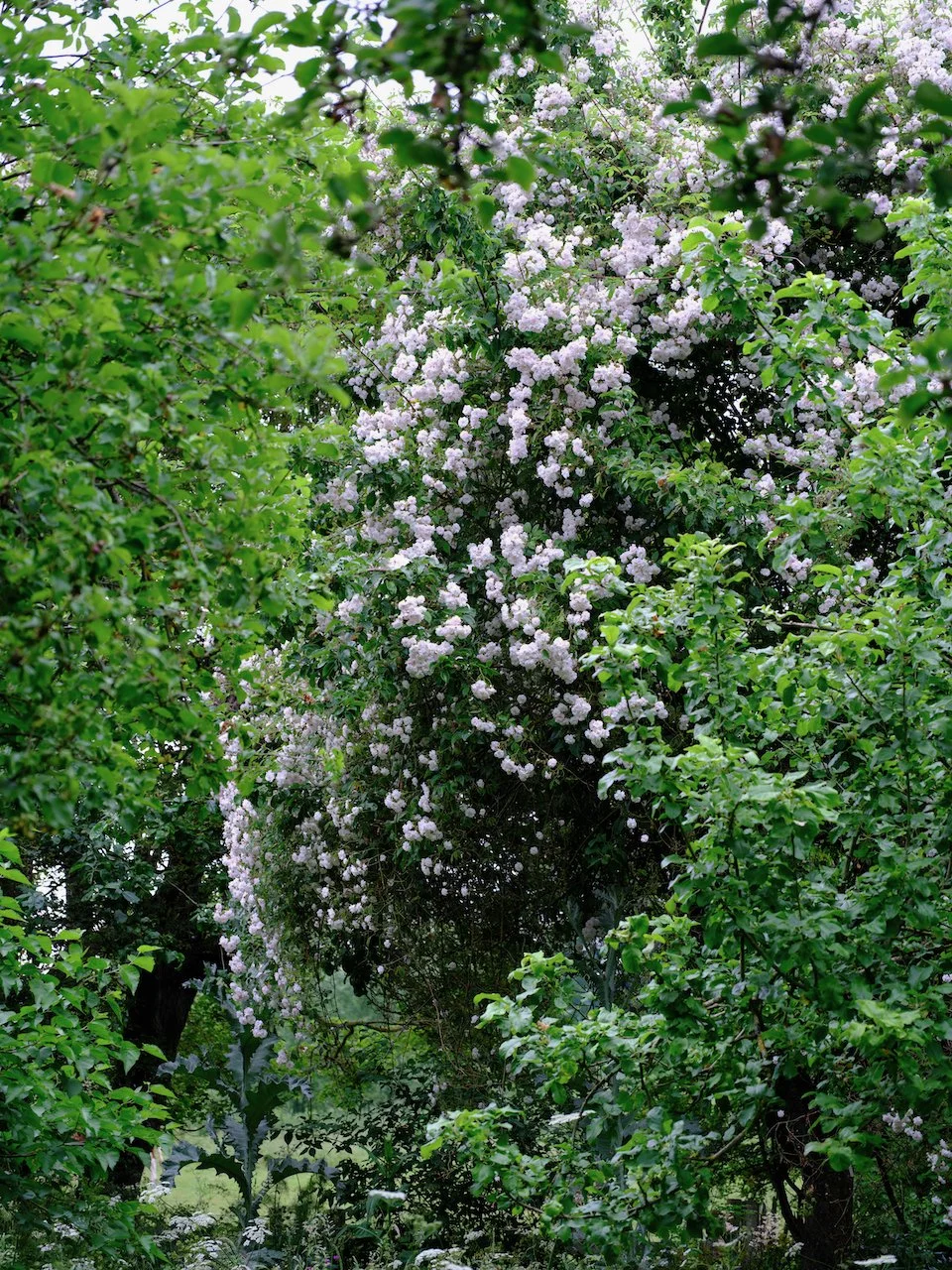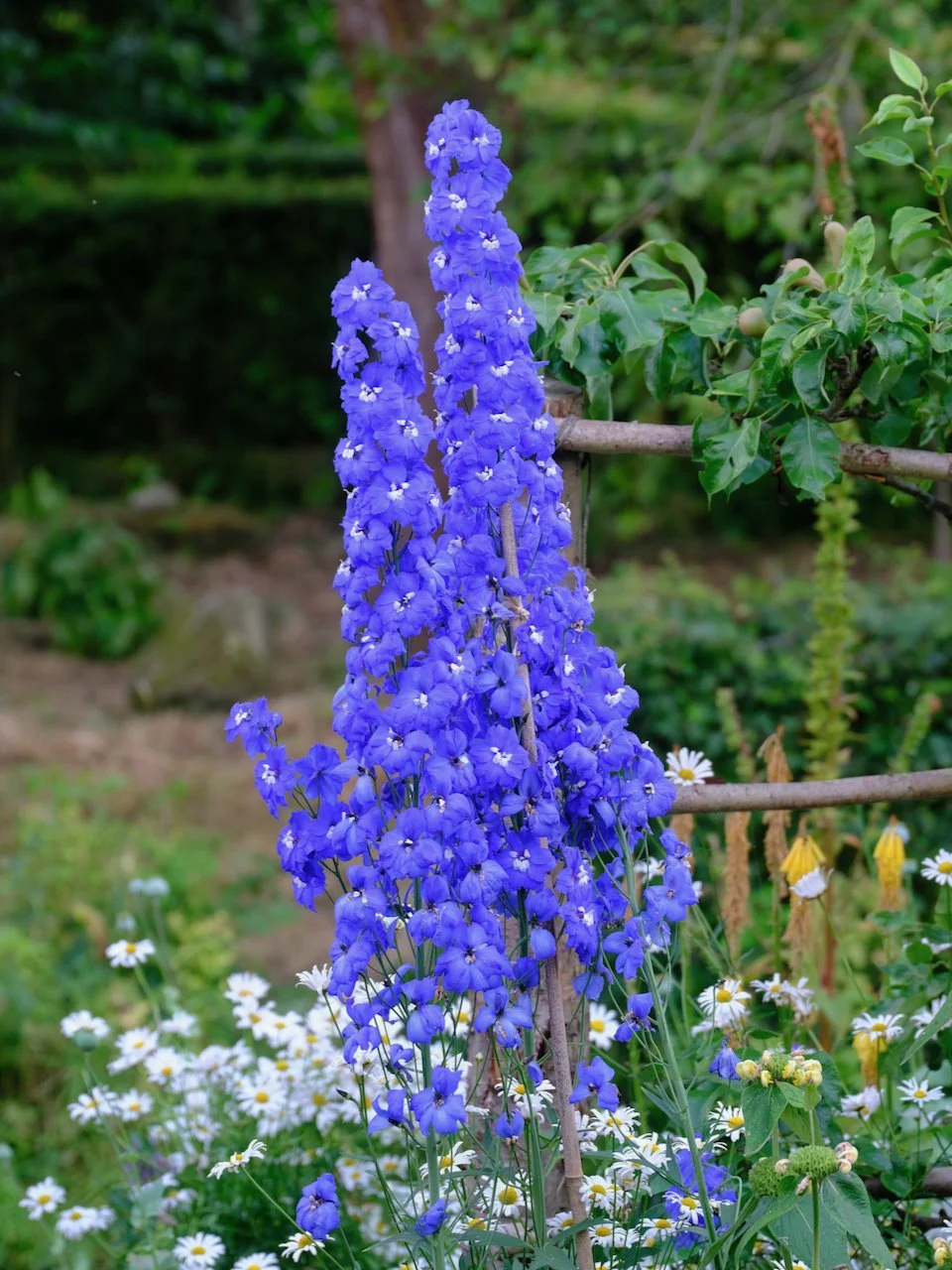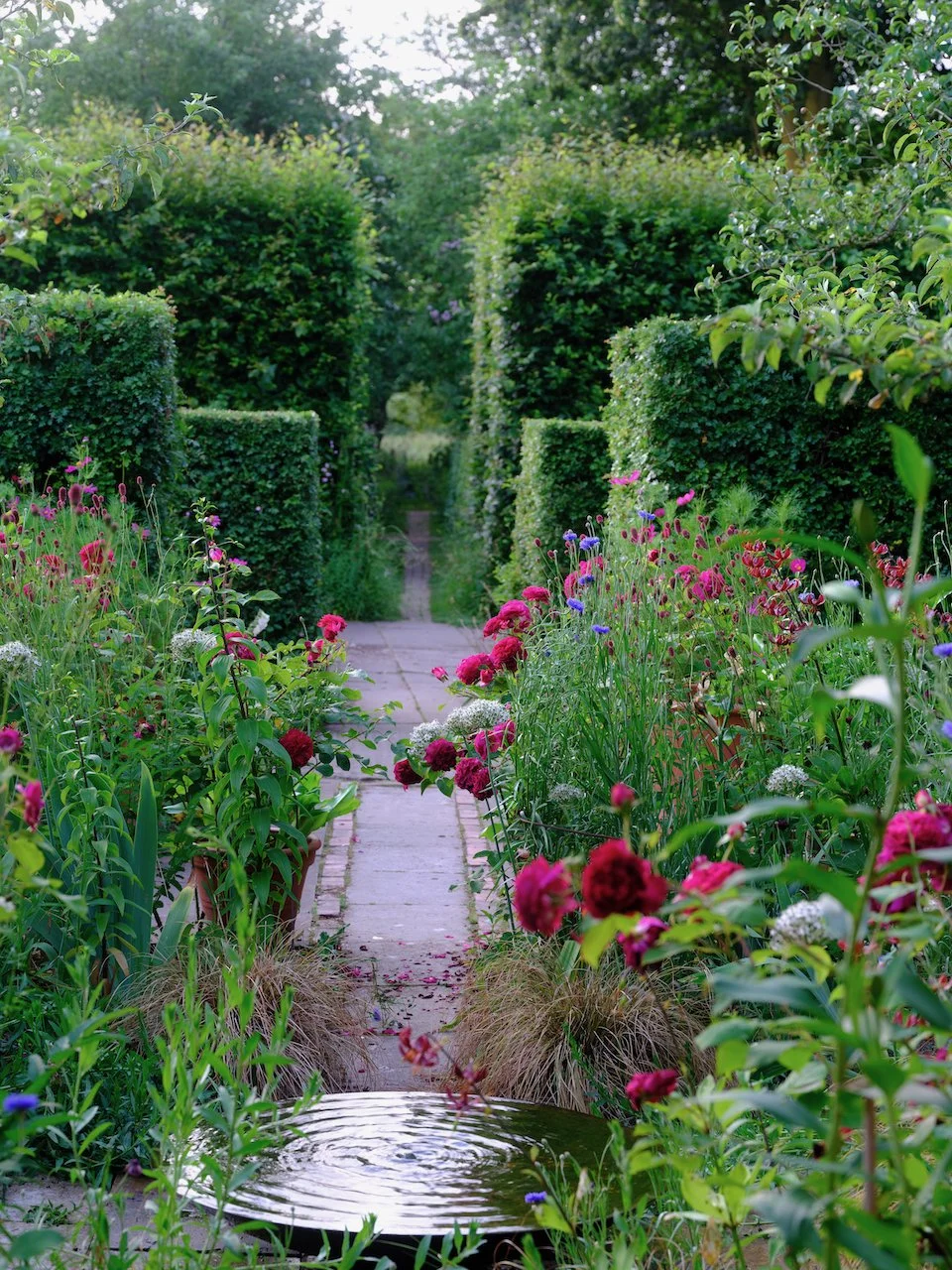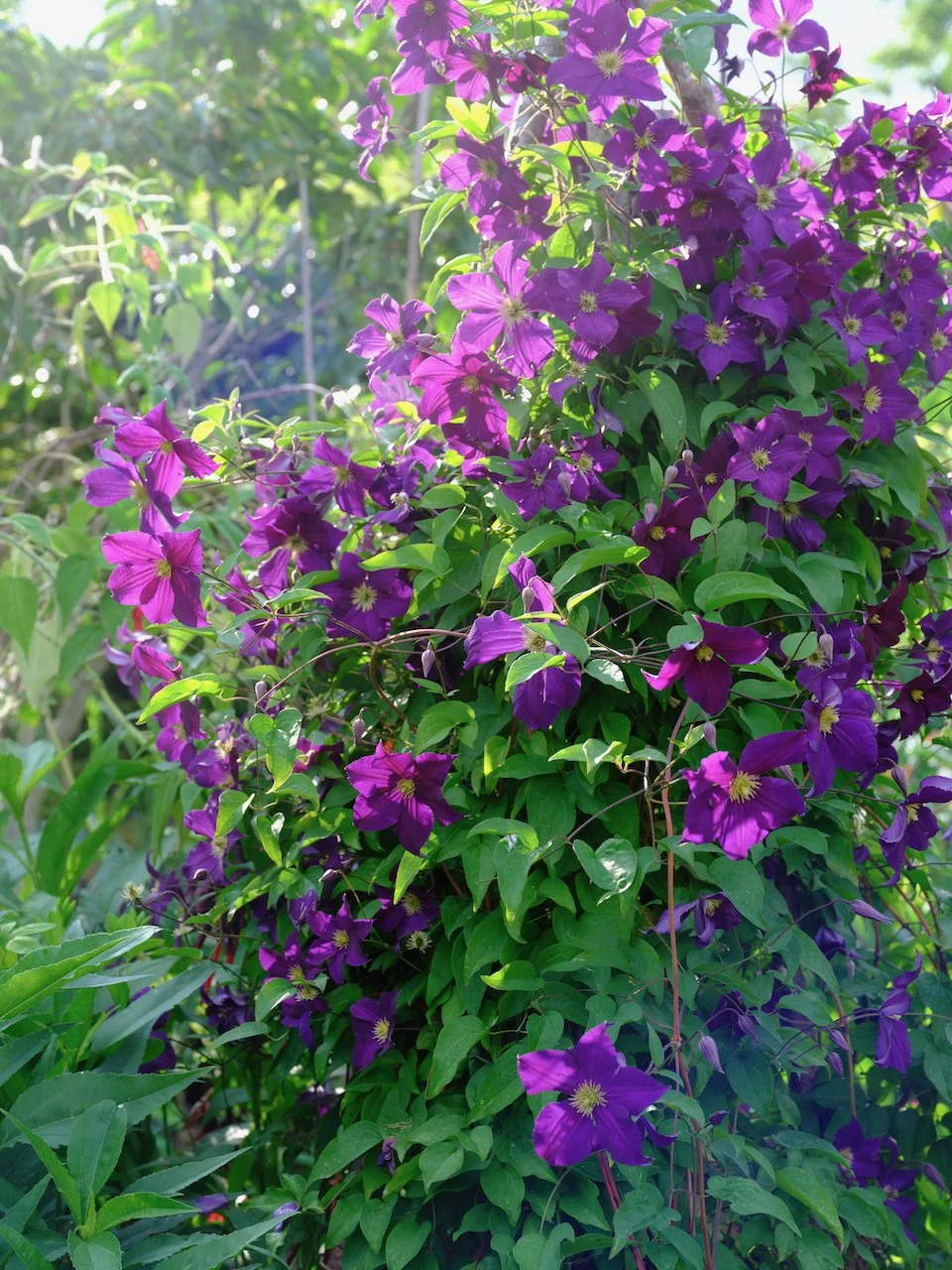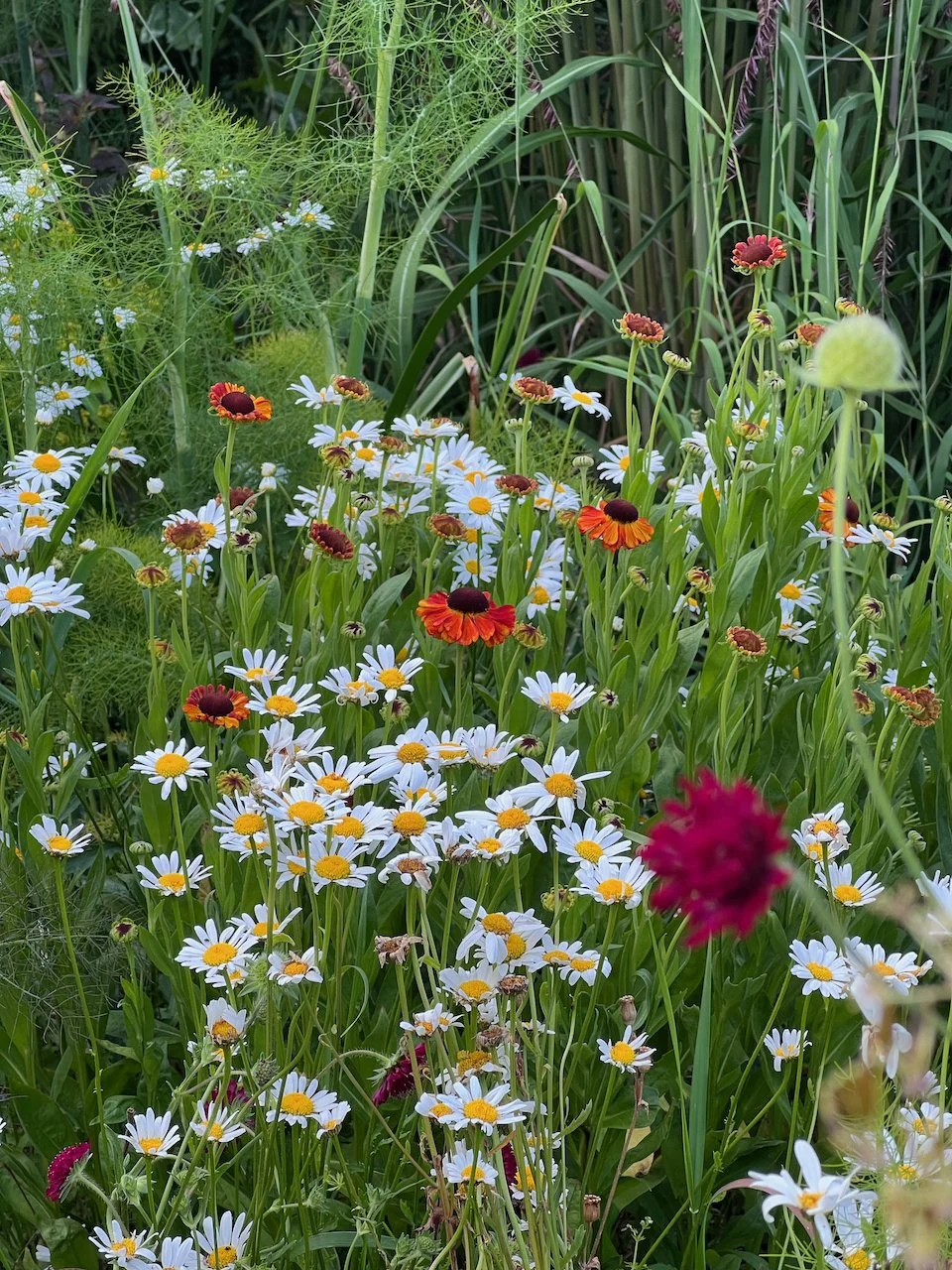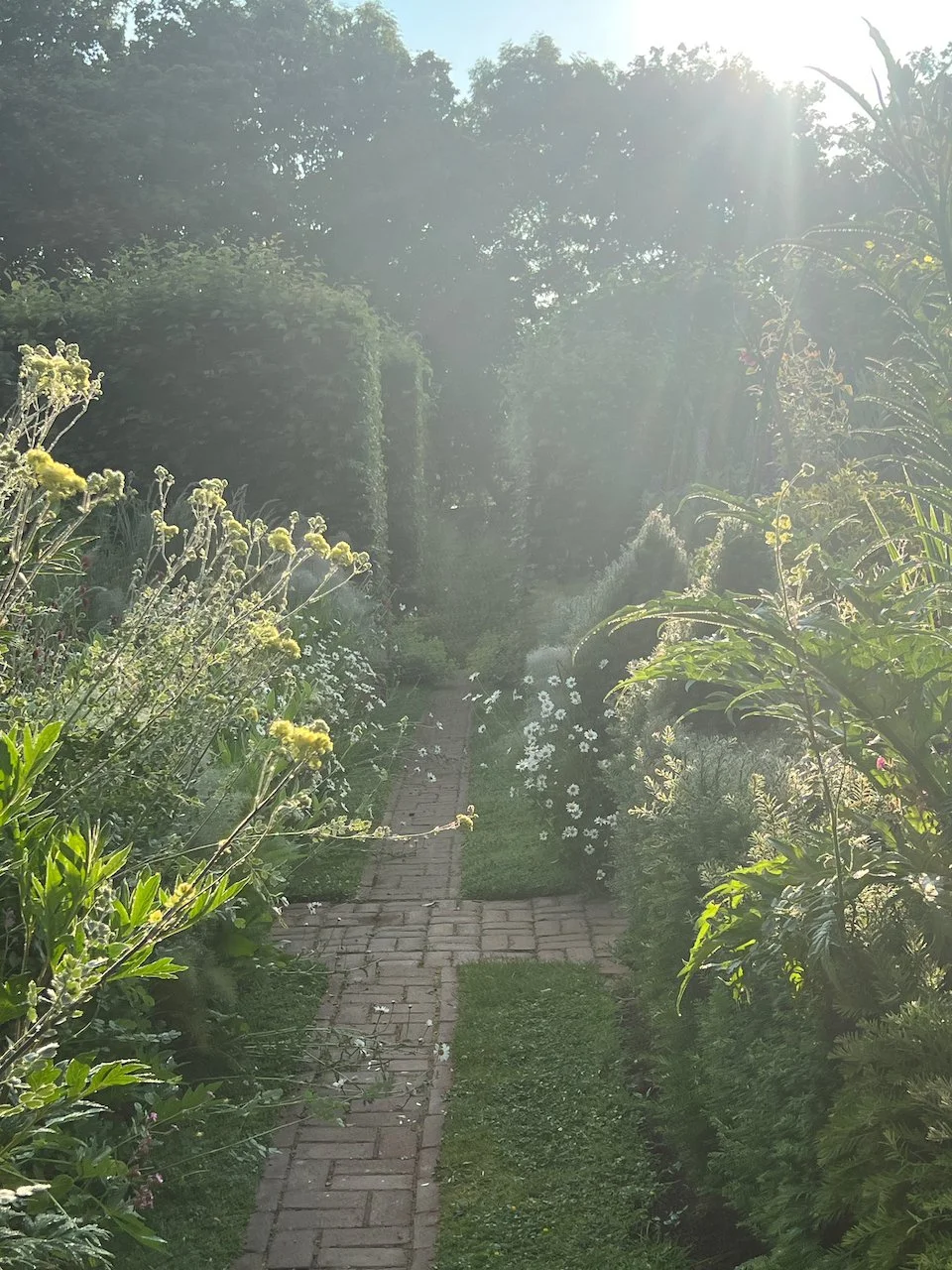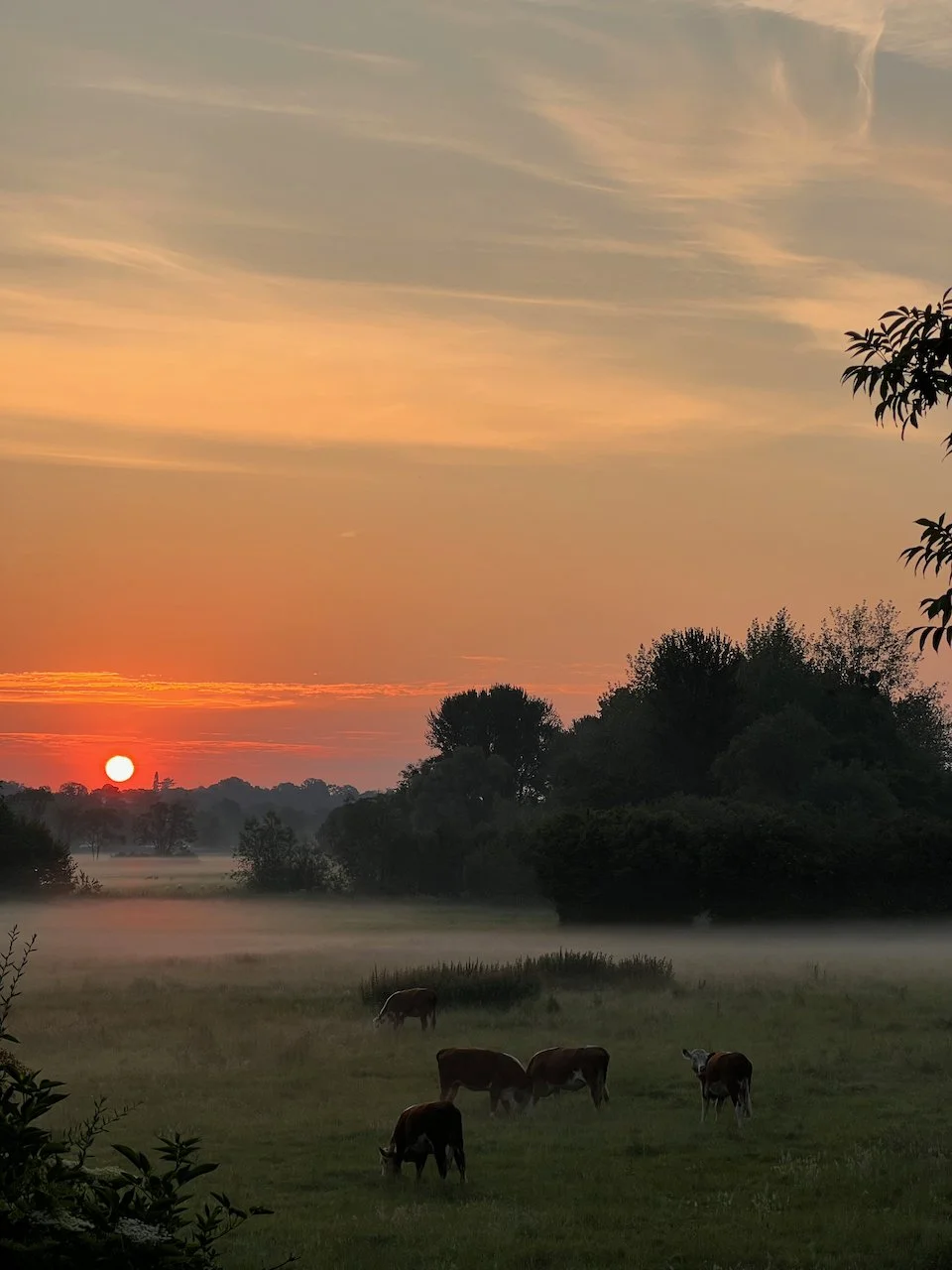June 2024
This strange year has - sometimes seemingly against the odds - reached June. Despite the weather this is summer and the garden knows it. The wet weather stretched on into May here, with little sunshine and less heat but the garden has flowered profusely. Whilst it may not have been warm, it has not been especially cold. Lots of rain and mild temperatures make ideal growing conditions for many plants.
So June sees roses blooming in every conceivable way and the borders filled with flower - many of which are very early this year. It is as though summer overrides the weather. Even the rainy, grey days are beautiful. The British garden – and countryside - is at its very best and I adore every second of it.
The days are long and light with dawn just after 4 in the morning and the light remaining until well after 10 at night.
Amidst the glowing green, colour arrives like a carnival. There are Oriental poppies with huge orange blooms, Bearded Irises topped with some of the richest colours in the whole floral world, large-flowering clematis and, as the month unfurls, roses of every shade of pink, white, red and yellow.
Bananas, cannas and dahlias are planted out into the Jewel Garden along with all the tender annuals we have been raising from seed throughout the colder spring months. The vegetable garden - which is always surprisingly slow to get going, really starts to take off and tender vegetables and herbs jostle for available space.
As well as planting out we also cut back - often hard, and the alliums, forget me nots, tulips and wallflowers can be cleared or moved to make room for the new wave of planting that takes place at the beginning of the month.
ROSES
It is impossible to celebrate June without speaking of roses. This is their time. The revamping of the Cottage Garden into a rose garden has involved many more roses so we now have 100 shrub roses with over 70 varieties as well as a dozen climbers. Some are still very young and will need a few years to properly establish - but they still bear their lovely flowers.
Many of these roses are the old-fashioned kinds like gallicas, damasks, centifolias, bourbons, albas and moss roses but I am increasingly planting English roses that are repeat flowering so the season extends beyond the glory days of June.
The secret of keeping any rose flowering as long as possible is to dead-head daily. Do not just pull off the spent petals but use secateurs and cut the spent stem right back to the next leaf or bud below it - however far down that is. This will provoke a side-shoot which in turn will carry more flowers.
Some roses, especially the species such as rosa rugosa or rosa moysii, have glorious hips in autumn and these will only develop if the flowers are allowed to set seed and fruit, so enjoy the flowers as long as they last and do not dead head so that they can develop into fruit.
BEES
Swarming bees are a sight that can be alarming at this time of year but in fact they are highly unlikely to attack or bother you at all. The queen will leave her hive looking for a new home, taking with her thousands of male worker bees. They will circle furiously making a sound like a hundred motor bikes before settling on a branch in a huge living cluster before heading off for an opening in a hollow trunk or a roof to establish the new colony.
WHAT TO DO IN THE GARDEN THIS MONTH:
GREENHOUSE / ALLOTMENT
The vegetable garden is coming out of the ‘Hungry Gap’ - that period between the last of the winter crops and the first of summer’s harvest but there is still time to start a vegetable garden from scratch although there should be some urgency to do so.
Tomato plants, courgettes, squashes, runner beans and sweetcorn can all be planted outside now the nights are warming up and aubergines, peppers, melons, cucumbers and more tomatoes grown in a greenhouse.
It is important to keep a succession of lettuce going this month making small sowings every two or three weeks to ensure a steady supply of fresh salad leaves.
Regularly pinch out side-shoots on tomatoes. It is best - and easiest - to do this first thing in the morning when the plant is turgid and they will snap off easily in your fingers.
June is a month when weeds really kick into action so all vegetable plots need regular weeding and nothing beats a hoe for this. The secret of effective hoing is to always do it in dry weather and preferably in the morning so that the weeds will cut cleanly from the soil and then dry out and die during the day. They can then be raked up in the afternoon and taken to the compost heap.
THIN APPLES, PEARS & DESSERT GRAPES TO ENSURE GOOD SIZED FRUIT
If your apple or pear trees suddenly deposit hundreds of small fruits on the ground you might feel something is going horribly wrong but this is perfectly normal and known as the ‘June Drop’. The tree is just reducing the quantity of fruit they carry in order to successfully ripen those that remain. However it is indiscriminate about which fruit it lets go, so it is a good idea to selectively remove the smallest fruit at this time of year before the tree does it for you.
Reduce each cluster on a spur to just two fruits that are not touching each other. Not only will these grow and ripen better as a result but also the risk of damaging the branches by the weight of the fruit later in the year is greatly reduced. With all fruit that is to be eaten rather than juiced, quality is much more important than quantity. You can always buy average apples but if you grow them yourself then you should always aim for them to be as good as possible.
PRUNE WISTERIA CUTTING BACK ALL NEW GROWTH TO SIX INCHES
Wisteria produces its flowers on new growth, which in turn emerges from spurs off the main shoots. When they have finished flowering - and for most of us that is around the middle of June - is the best time to prune all this year’s new shoots back to a spur leaving no more than about about 6 inches of growth. In the process the whole plant can be tidied, trained and tied in so that there are no loose, trailing shoots.
If there is any doubt about how hard to prune, err on the side of cutting too lightly and then in the new year, when the foliage has all died back, you can prune again, reducing each side shoot to just 2 or 3 inches.
PRUNE EARLY FLOWERING SHRUBS
The Spring flowering shrubs such as Philadelphus, Amelanchier, Deutzia, Weigelia and Rubus all produce their flowers on shoots grown the previous summer so should be pruned now. This will give the new growth plenty of time to ripen before winter and thus bear maximum flowers next Spring.
Mature shrubs should be pruned hard, cutting back most of the flowering stems to a healthy new shoot and taking the oldest growth (but no more than a third or quarter of the plant) right back to the base so it is completely renewed every three or four years. A very overgrown shrub should be renewed in this gradual manner too. Young shrubs should have the weakest growth cut back with the remainder pruned just to shape and size.
Weed, water and mulch with compost after pruning is done and take semi-ripe cuttings from healthy, straight non-flowering pruned stems.
TRIMMING VERTICALS
It is amazing how forgiving the eye is of the broad expanses of hedge, grass, border or anything really, as long as the edges, in any direction, are suitably straight and clean cut. It is too early to cut hedges because not all young birds have left the nest, but you can cut all entrances and exits and vertical planes in gaps in hedges to crisp them up and whilst this is quick and easy to do and clear up, it can transform the garden. Then, in a month’s time, all the hedges can have a proper trim and your edges, which by then will have become a little fuzzy again, can have their second cut.
TRIM BOX HEDGES
Until 10 years ago box hedges and topiary were almost ubiquitous in British gardens. But the combination of box blight and box moth caterpillar have made one of the stalwarts of the garden look very much under threat and it may be that fewer and fewer of us can successfully grow box at all.
However if you do then early June is the best time to give it a trim. Always use really sharp shears or hedge trimmer as this will avoid burning and tearing the cut edges which makes them turn brown.
Also always do this job when you know that you are going to have a few days of dry weather as the cut leaves and stems are extra susceptible to the box blight fungus when the wounds are fresh. Dry weather will stop the spores being active and allow time for the wounds to quickly scar over and become less vulnerable.
GRASS CUTTING
By June a million gardens are regularly humming - and at times unpleasantly roaring - with the sound of motor- mowers keeping the grass trim and under control. But at Longmeadow we restrict this to paths and try and let as much grass as possible grow long and planted up with spring bulbs and wildflowers. This looks beautiful and is so much better for insects and all forms of wildlife than a neatly mown lawn.
However it is important to time the cutting of this long grass to maximise the performance of the bulbs next spring and of the grasses themselves. Nothing should be cut at all until after the longest day on June 21st. This gives the foliage of the bulbs time to die back and feed next year’s bulb and subsequent flowering. The grass can then be cut if it as been hot and dry although sometimes I leave this as late as mid August.
Whenever you make this first cut of the long grass, you must collect it all up and take it to the compost heap to stop it adding nutrition to the ground which would encourage lusher, coarser grasses at the expense of the flowers.
SOW BIENNIALS
Biennials, such as Wallflowers, Honesty, Foxgloves, Forget-me-nots and Aquilegias differ from annuals, which grow, flower and set seed all in one growing season, in that they grow fast from seed and develop strong roots and foliage in one season and then flower in the next. For most this means that they germinate and grow without flowering in summer and autumn, remaining dormant over winter, then have another burst of growth before flowering in spring and early summer.
Sow them now in a seed tray, pots or in rows in the vegetable plot and prick them out into pots or thin so that each plant can develop healthy roots and foliage before planting them out where you want them to grow in autumn.

